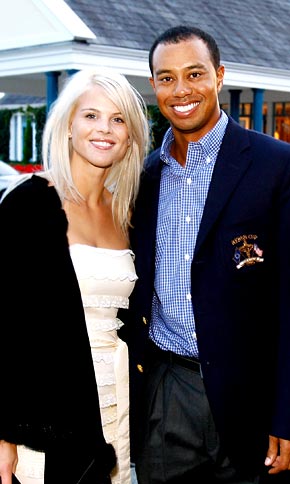
mgmanoj
10-31 03:22 PM
Need help
I have approved labor for PD 2004 and I-140 got rejected in Dec'2006 due to education credential with 3 year degree. currently my I-290 is pending with AAO appeal for more than 10 months and my extension is based on that.
New labor is filed in June'2007 and got approved in September. I-140 is pending for the new labor.
My Current extension is getting expired in January 2008. If I get premium processed my extension on old case and if my appeal gets denied will my extension or my status gets invalid or I have valid extension upto next January to get other I-140 approval ?
Please let me know ASAP so I can request premium process for extension.
Thanks,
Manoj
I have approved labor for PD 2004 and I-140 got rejected in Dec'2006 due to education credential with 3 year degree. currently my I-290 is pending with AAO appeal for more than 10 months and my extension is based on that.
New labor is filed in June'2007 and got approved in September. I-140 is pending for the new labor.
My Current extension is getting expired in January 2008. If I get premium processed my extension on old case and if my appeal gets denied will my extension or my status gets invalid or I have valid extension upto next January to get other I-140 approval ?
Please let me know ASAP so I can request premium process for extension.
Thanks,
Manoj
wallpaper hair tiger woods house jupiter

stormrider0610
November 15th, 2008, 09:51 PM
Hey guys, I was wondering what program you guys use to view RAW files from your Sony (Alpha 200 in my case)?
I am particularly interested in a viewer where I can scroll throw a folder of images quickly full scree, using the arrow keys on the keyboard, possibly with an option to zoom in 100% and also possibly where I can easily delete the image with a press of the Delete button. You guys know of any freebie utility viewer like that? I tried MaxView from Faststone but it does not seem to display the pic in high quality. Thanks.
I am particularly interested in a viewer where I can scroll throw a folder of images quickly full scree, using the arrow keys on the keyboard, possibly with an option to zoom in 100% and also possibly where I can easily delete the image with a press of the Delete button. You guys know of any freebie utility viewer like that? I tried MaxView from Faststone but it does not seem to display the pic in high quality. Thanks.

gc_on_demand
06-06 02:37 PM
Hi,
I just got H1B. My wife is currently on her F-1/OPT. Can anyone guide me where I can find required documents to apply for H4 for my wife? Do you think I can do it myself or it needs a lawyer?
Thank you,
John
John
Didn't create same thread. Please check that one. Please call members of lawmakers. Admin please close this thread.
I just got H1B. My wife is currently on her F-1/OPT. Can anyone guide me where I can find required documents to apply for H4 for my wife? Do you think I can do it myself or it needs a lawyer?
Thank you,
John
John
Didn't create same thread. Please check that one. Please call members of lawmakers. Admin please close this thread.
2011 Elin Nordegren house florida

rolrblade
03-06 10:19 AM
Hi,
I am currently doing my MBA here on a H4 visa. I want to know if I would be eligible to apply for the H1 Visa ( in the 20,000 quota) without converting to
F1 status. Please advise.
Thanks in advance...
You woulkd be eligible provided you have completed your MBA. If you are still working on it then you would not be considered an advanced Degree HOLDER.
I am currently doing my MBA here on a H4 visa. I want to know if I would be eligible to apply for the H1 Visa ( in the 20,000 quota) without converting to
F1 status. Please advise.
Thanks in advance...
You woulkd be eligible provided you have completed your MBA. If you are still working on it then you would not be considered an advanced Degree HOLDER.
more...

joyaseem
09-01 08:13 PM
Pathetic pace! :(
No change at TSC. NSC moved by 2 days.
http://www.uscis.gov/portal/site/uscis/menuitem.5af9bb95919f35e66f614176543f6d1a/?vgnextoid=21f2d9bbf0cb4110VgnVCM1000004718190aRCR D
No change at TSC. NSC moved by 2 days.
http://www.uscis.gov/portal/site/uscis/menuitem.5af9bb95919f35e66f614176543f6d1a/?vgnextoid=21f2d9bbf0cb4110VgnVCM1000004718190aRCR D

Neocrack
11-02 09:14 AM
I have a pending I 485 under EB3 I. My wife could become a US citizen early next year. We would like to file another I 485 based on the spouse US citizen catagory.
Do I have to withdraw the I 485 filed under the EB ?
I am currently using the EAD & AP derived from the current pending I 485 what happens to them. Do I file for 2 different sets of EAD?
Please advice..
Thanks
Neo
Do I have to withdraw the I 485 filed under the EB ?
I am currently using the EAD & AP derived from the current pending I 485 what happens to them. Do I file for 2 different sets of EAD?
Please advice..
Thanks
Neo
more...

desi3933
06-22 03:12 PM
Gang
Here is my situation, my PD is March 05 and my 140 is pending for the past 3 months. Do you guys think if I get my 140 approved by Premium processing it would increase my chances of 485 approval this fiscal year? BTW, as its obvious from my PD I will be filing my 485 in July, God willing.
Thanks
Have any done ANY research at all before posting this?
Here is my situation, my PD is March 05 and my 140 is pending for the past 3 months. Do you guys think if I get my 140 approved by Premium processing it would increase my chances of 485 approval this fiscal year? BTW, as its obvious from my PD I will be filing my 485 in July, God willing.
Thanks
Have any done ANY research at all before posting this?
2010 2011 tiger woods house jupiter

panky72
06-23 10:52 AM
Where can I do status checking? At what site?
https://egov.uscis.gov/cris/caseStatusSearchDisplay.do;jsessionid=cabgStG5cPwU Jh4hj71Qr
https://egov.uscis.gov/cris/caseStatusSearchDisplay.do;jsessionid=cabgStG5cPwU Jh4hj71Qr
more...

gjoe
10-04 07:05 AM
I am worried that we would be made to wait for years if they don't have the PD on the application. Why is USCIS working in such an disorganized fashion?
hair hair tiger woods new house

samrat_bhargava_vihari
06-14 03:58 PM
Now that the I-485 gates have been opened, I would like to know what will happen to my spouse's H1B application pending before USCIS? Since I am planning on filing for I-485 for my spouse as well, will the H1B process make a difference? Or will the H1B approval cause any issues to the I-485 application?
Please help!
I don't think so. One of my friend is in same situation. I feel 485 is filed after H1b so every thing is fine. But on which boat they need to travel is the question? you can't use H1 if you use EAD?
Please help!
I don't think so. One of my friend is in same situation. I feel 485 is filed after H1b so every thing is fine. But on which boat they need to travel is the question? you can't use H1 if you use EAD?
more...

Macaca
11-11 08:15 AM
Extreme Politics (http://www.nytimes.com/2007/11/11/books/review/Brinkley-t.html) By ALAN BRINKLEY | New York Times, November 11, 2007
Alan Brinkley is the Allan Nevins professor of history and the provost at Columbia University.
Few people would dispute that the politics of Washington are as polarized today as they have been in decades. The question Ronald Brownstein poses in this provocative book is whether what he calls “extreme partisanship” is simply a result of the tactics of recent party leaders, or whether it is an enduring product of a systemic change in the structure and behavior of the political world. Brownstein, formerly the chief political correspondent for The Los Angeles Times and now the political director of the Atlantic Media Company, gives considerable credence to both explanations. But the most important part of “The Second Civil War” — and the most debatable — is his claim that the current political climate is the logical, perhaps even inevitable, result of a structural change that stretched over a generation.
A half-century ago, Brownstein says, the two parties looked very different from how they appear today. The Democratic Party was a motley combination of the conservative white South; workers in the industrial North as well as African-Americans and other minorities; and cosmopolitan liberals in the major cities of the East and West Coasts. Republicans dominated the suburbs, the business world, the farm belt and traditional elites. But the constituencies of both parties were sufficiently diverse, both demographically and ideologically, to mute the differences between them. There were enough liberals in the Republican Party, and enough conservatives among the Democrats, to require continual negotiation and compromise and to permit either party to help shape policy and to be competitive in most elections. Brownstein calls this “the Age of Bargaining,” and while he concedes that this era helped prevent bold decisions (like confronting racial discrimination), he clearly prefers it to the fractious world that followed.
The turbulent politics of the 1960s and ’70s introduced newly ideological perspectives to the two major parties and inaugurated what Brownstein calls “the great sorting out” — a movement of politicians and voters into two ideological camps, one dominated by an intensified conservatism and the other by an aggressive liberalism. By the end of the 1970s, he argues, the Republican Party was no longer a broad coalition but a party dominated by its most conservative voices; the Democratic Party had become a more consistently liberal force, and had similarly banished many of its dissenting voices. Some scholars and critics of American politics in the 1950s had called for exactly such a change, insisting that clear ideological differences would give voters a real choice and thus a greater role in the democratic process. But to Brownstein, the “sorting out” was a catastrophe that led directly to the meanspirited, take-no-prisoners partisanship of today.
There is considerable truth in this story. But the transformation of American politics that he describes was the product of more extensive forces than he allows and has been, at least so far, less profound than he claims. Brownstein correctly cites the Democrats’ embrace of the civil rights movement as a catalyst for partisan change — moving the white South solidly into the Republican Party and shifting it farther to the right, while pushing the Democrats farther to the left. But he offers few other explanations for “the great sorting out” beyond the preferences and behavior of party leaders. A more persuasive explanation would have to include other large social changes: the enormous shift of population into the Sun Belt over the last several decades; the new immigration and the dramatic increase it created in ethnic minorities within the electorate; the escalation of economic inequality, beginning in the 1970s, which raised the expectations of the wealthy and the anxiety of lower-middle-class and working-class people (an anxiety conservatives used to gain support for lowering taxes and attacking government); the end of the cold war and the emergence of a much less stable international system; and perhaps most of all, the movement of much of the political center out of the party system altogether and into the largest single category of voters — independents. Voters may not have changed their ideology very much. Most evidence suggests that a majority of Americans remain relatively moderate and pragmatic. But many have lost interest, and confidence, in the political system and the government, leaving the most fervent party loyalists with greatly increased influence on the choice of candidates and policies.
Brownstein skillfully and convincingly recounts the process by which the conservative movement gained control of the Republican Party and its Congressional delegation. He is especially deft at identifying the institutional and procedural tools that the most conservative wing of the party used after 2000 both to vanquish Republican moderates and to limit the ability of the Democratic minority to participate meaningfully in the legislative process. He is less successful (and somewhat halfhearted) in making the case for a comparable ideological homogeneity among the Democrats, as becomes clear in the book’s opening passage. Brownstein appropriately cites the former House Republican leader Tom DeLay’s farewell speech in 2006 as a sign of his party’s recent strategy. DeLay ridiculed those who complained about “bitter, divisive partisan rancor.” Partisanship, he stated, “is not a symptom of democracy’s weakness but of its health and its strength.”
But making the same argument about a similar dogmatism and zealotry among Democrats is a considerable stretch. To make this case, Brownstein cites not an elected official (let alone a Congressional leader), but the readers of the Daily Kos, a popular left-wing/libertarian Web site that promotes what Brownstein calls “a scorched-earth opposition to the G.O.P.” According to him, “DeLay and the Democratic Internet activists ... each sought to reconfigure their political party to the same specifications — as a warrior party that would commit to opposing the other side with every conceivable means at its disposal.” The Kos is a significant force, and some leading Democrats have attended its yearly conventions. But few party leaders share the most extreme views of Kos supporters, and even fewer embrace their “passionate partisanship.” Many Democrats might wish that their party leaders would emulate the aggressively partisan style of the Republican right. But it would be hard to argue that they have come even remotely close to the ideological purity of their conservative counterparts. More often, they have seemed cowed and timorous in the face of Republican discipline, and have over time themselves moved increasingly rightward; their recapture of Congress has so far appeared to have emboldened them only modestly.
There is no definitive answer to the question of whether the current level of polarization is the inevitable result of long-term systemic changes, or whether it is a transitory product of a particular political moment. But much of this so-called age of extreme partisanship has looked very much like Brownstein’s “Age of Bargaining.” Ronald Reagan, the great hero of the right and a much more effective spokesman for its views than President Bush, certainly oversaw a significant shift in the ideology and policy of the Republican Party. But through much of his presidency, both he and the Congressional Republicans displayed considerable pragmatism, engaged in negotiation with their opponents and accepted many compromises. Bill Clinton, bedeviled though he was by partisan fury, was a master of compromise and negotiation — and of co-opting and transforming the views of his adversaries. Only under George W. Bush — through a combination of his control of both houses of Congress, his own inflexibility and the post-9/11 climate — did extreme partisanship manage to dominate the agenda. Given the apparent failure of this project, it seems unlikely that a new president, whether Democrat or Republican, will be able to recreate the dispiriting political world of the last seven years.
Division of the U.S. Didn’t Occur Overnight (http://www.nytimes.com/2007/11/13/books/13kaku.html) By MICHIKO KAKUTANI | New York Times, November 13, 2007
THE SECOND CIVIL WAR How Extreme Partisanship Has Paralyzed Washington and Polarized America By Ronald Brownstein, The Penguin Press. $27.95
Alan Brinkley is the Allan Nevins professor of history and the provost at Columbia University.
Few people would dispute that the politics of Washington are as polarized today as they have been in decades. The question Ronald Brownstein poses in this provocative book is whether what he calls “extreme partisanship” is simply a result of the tactics of recent party leaders, or whether it is an enduring product of a systemic change in the structure and behavior of the political world. Brownstein, formerly the chief political correspondent for The Los Angeles Times and now the political director of the Atlantic Media Company, gives considerable credence to both explanations. But the most important part of “The Second Civil War” — and the most debatable — is his claim that the current political climate is the logical, perhaps even inevitable, result of a structural change that stretched over a generation.
A half-century ago, Brownstein says, the two parties looked very different from how they appear today. The Democratic Party was a motley combination of the conservative white South; workers in the industrial North as well as African-Americans and other minorities; and cosmopolitan liberals in the major cities of the East and West Coasts. Republicans dominated the suburbs, the business world, the farm belt and traditional elites. But the constituencies of both parties were sufficiently diverse, both demographically and ideologically, to mute the differences between them. There were enough liberals in the Republican Party, and enough conservatives among the Democrats, to require continual negotiation and compromise and to permit either party to help shape policy and to be competitive in most elections. Brownstein calls this “the Age of Bargaining,” and while he concedes that this era helped prevent bold decisions (like confronting racial discrimination), he clearly prefers it to the fractious world that followed.
The turbulent politics of the 1960s and ’70s introduced newly ideological perspectives to the two major parties and inaugurated what Brownstein calls “the great sorting out” — a movement of politicians and voters into two ideological camps, one dominated by an intensified conservatism and the other by an aggressive liberalism. By the end of the 1970s, he argues, the Republican Party was no longer a broad coalition but a party dominated by its most conservative voices; the Democratic Party had become a more consistently liberal force, and had similarly banished many of its dissenting voices. Some scholars and critics of American politics in the 1950s had called for exactly such a change, insisting that clear ideological differences would give voters a real choice and thus a greater role in the democratic process. But to Brownstein, the “sorting out” was a catastrophe that led directly to the meanspirited, take-no-prisoners partisanship of today.
There is considerable truth in this story. But the transformation of American politics that he describes was the product of more extensive forces than he allows and has been, at least so far, less profound than he claims. Brownstein correctly cites the Democrats’ embrace of the civil rights movement as a catalyst for partisan change — moving the white South solidly into the Republican Party and shifting it farther to the right, while pushing the Democrats farther to the left. But he offers few other explanations for “the great sorting out” beyond the preferences and behavior of party leaders. A more persuasive explanation would have to include other large social changes: the enormous shift of population into the Sun Belt over the last several decades; the new immigration and the dramatic increase it created in ethnic minorities within the electorate; the escalation of economic inequality, beginning in the 1970s, which raised the expectations of the wealthy and the anxiety of lower-middle-class and working-class people (an anxiety conservatives used to gain support for lowering taxes and attacking government); the end of the cold war and the emergence of a much less stable international system; and perhaps most of all, the movement of much of the political center out of the party system altogether and into the largest single category of voters — independents. Voters may not have changed their ideology very much. Most evidence suggests that a majority of Americans remain relatively moderate and pragmatic. But many have lost interest, and confidence, in the political system and the government, leaving the most fervent party loyalists with greatly increased influence on the choice of candidates and policies.
Brownstein skillfully and convincingly recounts the process by which the conservative movement gained control of the Republican Party and its Congressional delegation. He is especially deft at identifying the institutional and procedural tools that the most conservative wing of the party used after 2000 both to vanquish Republican moderates and to limit the ability of the Democratic minority to participate meaningfully in the legislative process. He is less successful (and somewhat halfhearted) in making the case for a comparable ideological homogeneity among the Democrats, as becomes clear in the book’s opening passage. Brownstein appropriately cites the former House Republican leader Tom DeLay’s farewell speech in 2006 as a sign of his party’s recent strategy. DeLay ridiculed those who complained about “bitter, divisive partisan rancor.” Partisanship, he stated, “is not a symptom of democracy’s weakness but of its health and its strength.”
But making the same argument about a similar dogmatism and zealotry among Democrats is a considerable stretch. To make this case, Brownstein cites not an elected official (let alone a Congressional leader), but the readers of the Daily Kos, a popular left-wing/libertarian Web site that promotes what Brownstein calls “a scorched-earth opposition to the G.O.P.” According to him, “DeLay and the Democratic Internet activists ... each sought to reconfigure their political party to the same specifications — as a warrior party that would commit to opposing the other side with every conceivable means at its disposal.” The Kos is a significant force, and some leading Democrats have attended its yearly conventions. But few party leaders share the most extreme views of Kos supporters, and even fewer embrace their “passionate partisanship.” Many Democrats might wish that their party leaders would emulate the aggressively partisan style of the Republican right. But it would be hard to argue that they have come even remotely close to the ideological purity of their conservative counterparts. More often, they have seemed cowed and timorous in the face of Republican discipline, and have over time themselves moved increasingly rightward; their recapture of Congress has so far appeared to have emboldened them only modestly.
There is no definitive answer to the question of whether the current level of polarization is the inevitable result of long-term systemic changes, or whether it is a transitory product of a particular political moment. But much of this so-called age of extreme partisanship has looked very much like Brownstein’s “Age of Bargaining.” Ronald Reagan, the great hero of the right and a much more effective spokesman for its views than President Bush, certainly oversaw a significant shift in the ideology and policy of the Republican Party. But through much of his presidency, both he and the Congressional Republicans displayed considerable pragmatism, engaged in negotiation with their opponents and accepted many compromises. Bill Clinton, bedeviled though he was by partisan fury, was a master of compromise and negotiation — and of co-opting and transforming the views of his adversaries. Only under George W. Bush — through a combination of his control of both houses of Congress, his own inflexibility and the post-9/11 climate — did extreme partisanship manage to dominate the agenda. Given the apparent failure of this project, it seems unlikely that a new president, whether Democrat or Republican, will be able to recreate the dispiriting political world of the last seven years.
Division of the U.S. Didn’t Occur Overnight (http://www.nytimes.com/2007/11/13/books/13kaku.html) By MICHIKO KAKUTANI | New York Times, November 13, 2007
THE SECOND CIVIL WAR How Extreme Partisanship Has Paralyzed Washington and Polarized America By Ronald Brownstein, The Penguin Press. $27.95
hot tiger woods house jupiter

gc2
09-29 07:20 AM
http://immigrationvoice.org/forum/showthread.php?t=13697
more...
house 2011 tiger woods house jupiter

gman
07-25 11:39 PM
My attorney filed I-486 for me last august and now it's about time for me to renew the EAD. On this page http://www.uscis.gov/portal/site/uscis/menuitem.5af9bb95919f35e66f614176543f6d1a/?vgnextoid=73ddd59cb7a5d010VgnVCM10000048f3d6a1RCR D&vgnextchannel=db029c7755cb9010VgnVCM10000045f3d6a1 RCRD
it states that if you filed after July 30, 2007 then a fee is no longer needed. My I-485 application was filed under the old fee structure. Does it still mean I can file without a fee.
Thanks in advance.
it states that if you filed after July 30, 2007 then a fee is no longer needed. My I-485 application was filed under the old fee structure. Does it still mean I can file without a fee.
Thanks in advance.
tattoo 2010 Tiger Woods House Jupiter

leoindiano
07-01 10:14 AM
Will CIS Discontinue Intake of I- 485 Applications?
It is possible. Such an action would be illegal, but CIS has already stopped accepting I- 485 applications for another category known as "Other Workers," despite June Visa Bulletin showing that category is current. My advice to all of you is keep filing all through the month of July. For all we know, they may never issue such an illegal policy or they might lose a lawsuit filed against them. So keep filing.
It is possible. Such an action would be illegal, but CIS has already stopped accepting I- 485 applications for another category known as "Other Workers," despite June Visa Bulletin showing that category is current. My advice to all of you is keep filing all through the month of July. For all we know, they may never issue such an illegal policy or they might lose a lawsuit filed against them. So keep filing.
more...
pictures fl. hot tiger woods house

Blog Feeds
08-31 11:30 AM
Cuban-born Andres Alonso is the CEO of the Baltimore City Schools. Alonso graduated from Columbia University before going on to get a law degree and a doctorate in education at Harvard. Alonso was interviewed on NBC News last night about how federal stimulus money is helping to keep his school system running smoothly this year despite the economy. Alonso brings an interesting background to the job having worked for one of the top law firms in Washington, DC as well as a teacher in inner city Newark, New Jersey. He was the deputy chancellor of the New York City schools...
More... (http://blogs.ilw.com/gregsiskind/2009/08/immigrant-of-the-day-andres-alonso-educator.html)
More... (http://blogs.ilw.com/gregsiskind/2009/08/immigrant-of-the-day-andres-alonso-educator.html)
dresses Tiger+woods+house+in+

anilsal
01-14 12:28 PM
Even when officers work on your files, there may not be any LUDs.
If you input all your case numbers (old H1B approvals etc), you will see that those get LUDs once in a while. They may be batch jobs or someone pulling files frequently or filing old applications etc.
Since your PD is a few months away, it is best to just relax and hope your applications are preadjudicated. When your PD becomes current, then go the Service Request - infopass - senator/ombudsman route.
If you are that interested, take infopass appointments and find out where your application is. If the CIS person is friendly, they give out a lot of information. Dress well and talk politely.
If you input all your case numbers (old H1B approvals etc), you will see that those get LUDs once in a while. They may be batch jobs or someone pulling files frequently or filing old applications etc.
Since your PD is a few months away, it is best to just relax and hope your applications are preadjudicated. When your PD becomes current, then go the Service Request - infopass - senator/ombudsman route.
If you are that interested, take infopass appointments and find out where your application is. If the CIS person is friendly, they give out a lot of information. Dress well and talk politely.
more...
makeup tiger woods house jupiter

Blog Feeds
07-15 03:01 PM
On July 9, the Senate, by a vote of 84 to 6, passed a DHS funding bill which includes a variety of immigration enforcement and benefits measures. The measure now goes to a House-Senate Conference Committee which must reconcile this bill with a funding measure previously passed by the House of Representatives which contains none of the immigration amendments added by the Senate. ENFORCEMENT PROVISIONS The Senate adopted an amendment offered by Senator Jim DeMint (R-SC) to provide that the DHS must complete 700 miles of actual fencing along the U.S.- Mexican border by the end of fiscal year 2010....
More... (http://blogs.ilw.com/carlshusterman/2009/07/senate-bill-includes-immigration-measures.html)
More... (http://blogs.ilw.com/carlshusterman/2009/07/senate-bill-includes-immigration-measures.html)
girlfriend More Tiger Woods

monkeyfresh
11-14 05:28 PM
I am available to work on a freelance basis, and very enthusiastic about creating interesting and unique Flash based projects. I have extensive experience in working in a freelance environment as I've been making my living as a freelance Flash developer for two years.
Please feel free to visit my web site to attain a thorough understanding of my capabilities.
dubko productions (http://www.dubko.com)
Thank you
Please feel free to visit my web site to attain a thorough understanding of my capabilities.
dubko productions (http://www.dubko.com)
Thank you
hairstyles tiger woods house jupiter fl.

kirupa
04-30 07:28 PM
Aww - that's so nice. (Pets the stamp) :)
black_logs
01-30 09:30 PM
I am recalling TX from the States Calling List. Lot of People from AZ/CO/WA signed up allready I don't want a mess in the conference, rather I would like everyone to be able to speak. We'll do Texas conference on Thursday 10PM EST (02/02/2006)
anandrajesh
02-03 04:30 PM
Hi,
Can someone tell me a little bit about visitor visa validity dates. For eg: if my parents got a 3 month visa, is it valid from the date it is issued or from the date of entry into the US?
Thanks
Roshni
It is valid from the date it is issued and they shld enter the US before it expires. However at the port of entry, the consular officer may chose it give it beyond the actual expiry date.
Can someone tell me a little bit about visitor visa validity dates. For eg: if my parents got a 3 month visa, is it valid from the date it is issued or from the date of entry into the US?
Thanks
Roshni
It is valid from the date it is issued and they shld enter the US before it expires. However at the port of entry, the consular officer may chose it give it beyond the actual expiry date.
No comments:
Post a Comment